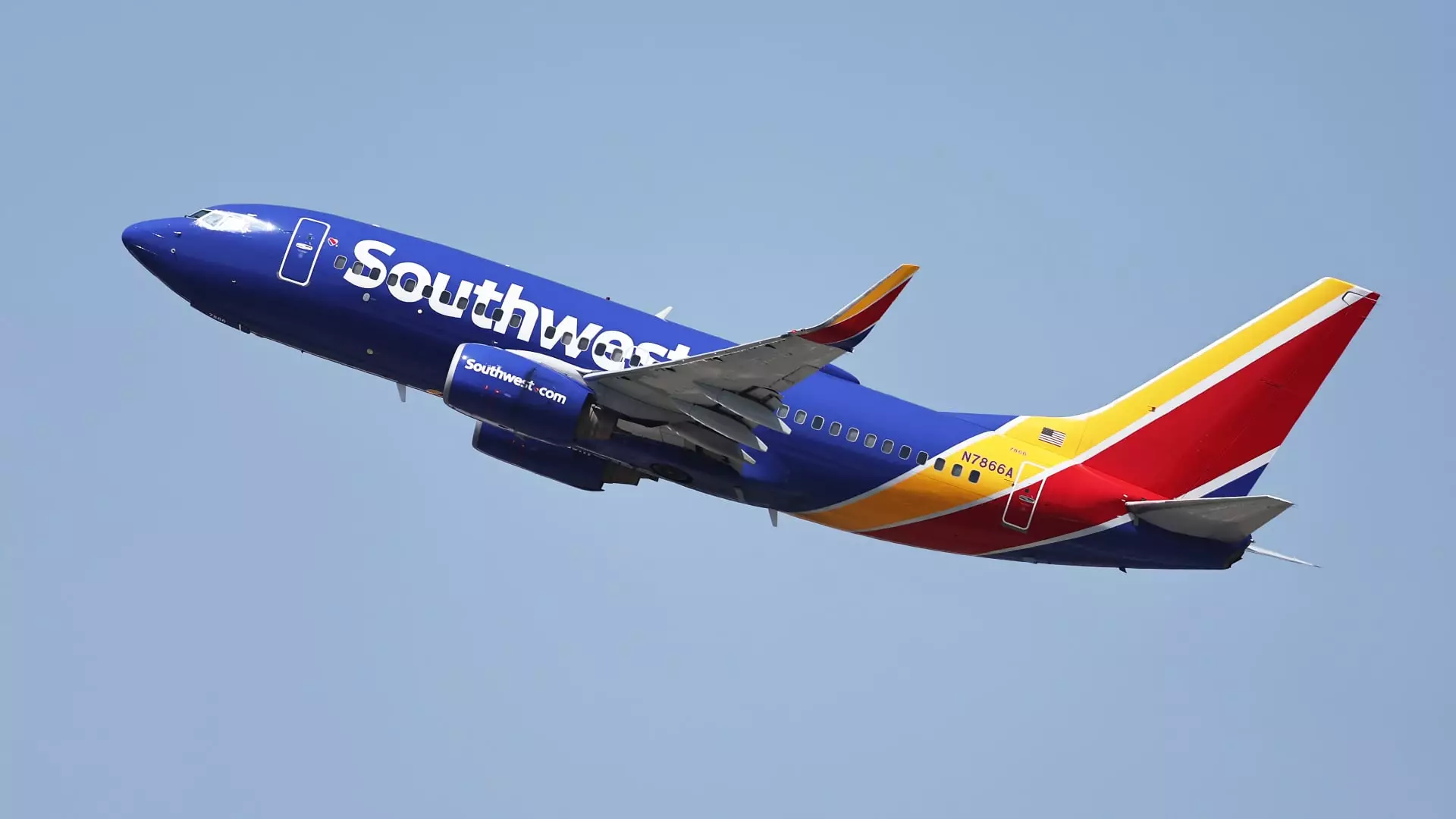Southwest Airlines, a prominent player in the airline industry, is currently grappling with rising pressure to bolster its profit margins. With activist investor Elliott Investment Management pushing for significant changes within the company, Southwest executives are now confronted with the urgent need to reassess their business strategies. Recent indications from the airline suggest that it is preparing to make tough decisions aimed at rejuvenating its financial standing – decisions that could reshape its operations and service model.
In a bid to enhance revenue generation, Southwest has rolled out several impactful changes to its long-standing business model. Historically known for its open seating policy, the airline is transitioning to an assigned seating system, which aims to optimize customer satisfaction and operational efficiency. Furthermore, the introduction of premium seating options that offer increased legroom is likely to attract business travelers willing to pay more for enhanced comfort. This shift is indicative of a broader trend in the airline sector, where distinguishing between budget and premium services is becoming increasingly critical.
In addition to these changes in seating arrangements, Southwest is expanding its digital presence. By allowing its flights to be listed on major travel platforms such as Google Flights and Kayak, it is making its offerings more accessible to a wider audience. Combined with a targeted marketing approach that aims to appeal to younger demographics, these changes reflect Southwest’s commitment to evolving with the preferences of modern travelers.
Despite these positive steps, COO Andrew Watterson has conveyed that more stringent adjustments are necessary for a successful turnaround. In recent communications to employees, he acknowledged the necessity for network alterations that, while not involving complete station closures, may result in operational changes across various cities. This strategic pivot underscores the airline’s focus on profitability – a move that may include the realignment of resources to more lucrative routes.
While no immediate furloughs are planned, it is understood that staff in certain areas could be reassigned as the airline narrows its operational footprint. This calculated approach aims to concentrate efforts on flights that promise stronger returns, mirroring industry trends where competitors like JetBlue have proactively adjusted their route structures to enhance revenue.
As Southwest prepares for an upcoming investor day event, critical insights into its restructured initiatives and route changes will be unveiled. With internal calls for leadership changes stemming from Elliott Investment Management, the airline’s decision-makers must navigate these pressures effectively to ensure long-term sustainability. The recent announcement of executive chairman Gary Kelly’s resignation signifies a pivotal moment in Southwest’s leadership that could set the tone for future transformations.
Southwest Airlines stands at a crossroads, where strategic alterations are imperative to reclaim profitability. By embracing change and focusing on essential operational adjustments, the airline seeks not just to survive but thrive in a competitive landscape. As the airline prepares to unveil more detailed plans, stakeholders will be watching closely to see how these initiatives translate into improved performance and enhanced customer experiences.

Leave a Reply